Our very own Danielle Leach stepped in front of the Senate Cancer Coalition this month to tell her personal story and emphasize the need for more funding for childhood cancer. “While it was certainly intimidating … I know that sharing our stories is the only way to get the necessary resources from Congress to tackle childhood cancer,” Danielle said. Here’s what she had to say.
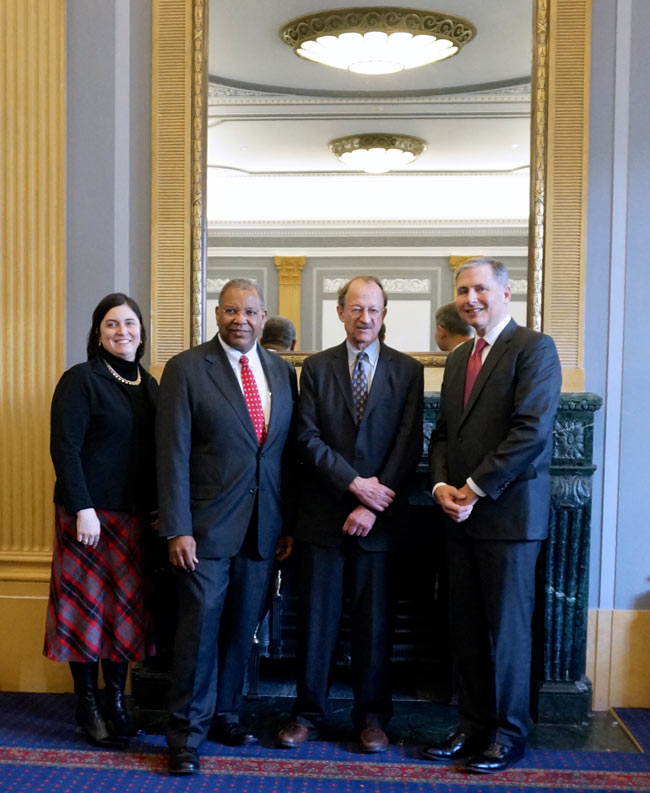
St. Baldrick’s Director of Government Relations, Danielle Leach, stands with (left to right) Dr. Otis Brawley, Chief Medical Officer of the American Cancer Society, Dr. Harold Varmus, Director of the National Cancer Institute, and Dr. Louis Weiner, Director of the Georgetown Lombardi Comprehensive Cancer Center.
My name is Danielle Leach. I am the Director of Government Relations for the St. Baldrick’s Foundation, based in California. St. Baldrick’s donors and volunteers have enabled the foundation to fund over $154 million in grants, making St. Baldrick’s the largest private funder of childhood cancer research other than the U.S. government.
I am also the co-chair for the Alliance for Childhood Cancer. The Alliance represents 29 national patient advocacy groups, healthcare professionals, and scientific organizations committed to representing over 10 million Americans who care deeply about childhood cancer.
Most importantly, I come to you today as an advocate. My sister survived childhood cancer and my middle son died from cancer.
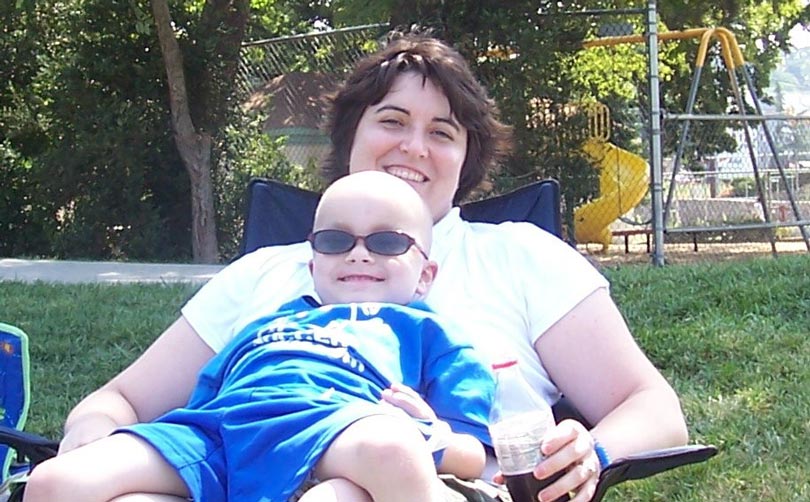
Danielle and her son Mason lounge together. Mason was diagnosed with a brain tumor when he was 3.
My son Mason wasn’t so lucky.
What can I tell you about our little boy? Our Mason was a fighter, a superhero, an artist, a soccer player, a baseball player, and a cancer survivor. Our 3-year-old Mason was diagnosed with a brain tumor — medulloblastoma — in 2006. His only symptoms? Four days of vomiting.
I was shocked to discover that the recommended treatment had really not changed for 30 years. The doctors offered surgery, radiation, and chemotherapy. We also learned that the treatment would probably leave him disabled for life if he survived. Within days of diagnosis, we had a little boy with a surgery scar who could no longer talk or walk and we did not know if we would ever get him back.
Mason lived his life as a force of nature. He was sweet and loved to give hugs and kisses, but he was also stubborn as an ox and very vocal about what he wanted. We truly believe it was that stubbornness and his determination that helped him regain his speech and mobility after his surgery.
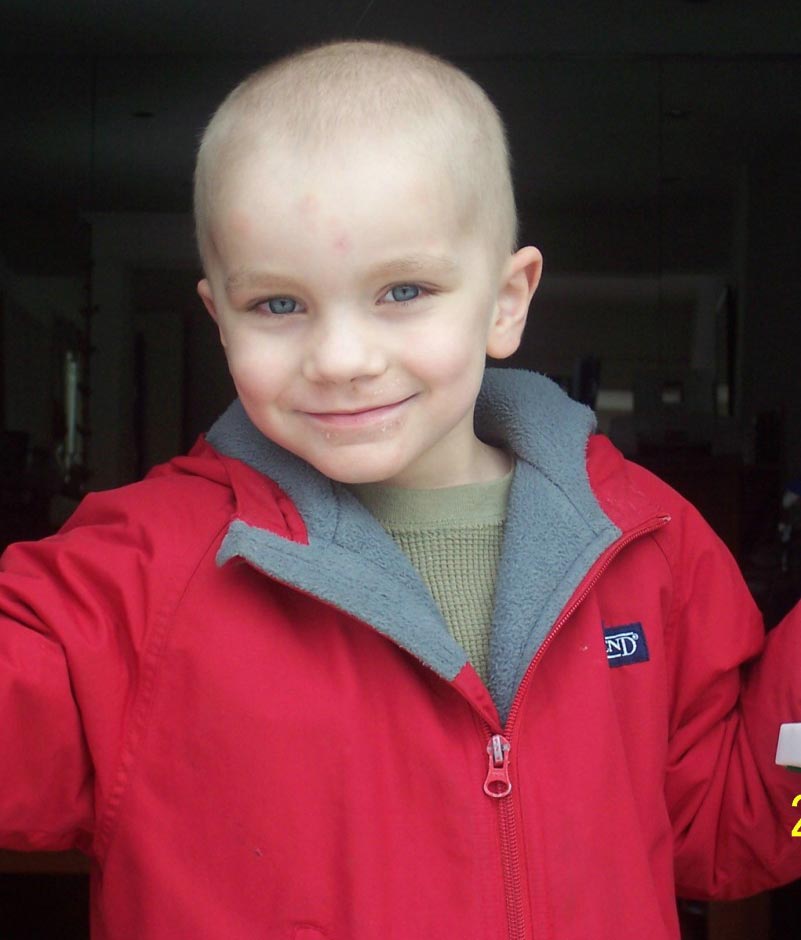
Mason when he was in treatment for medulloblastoma, a pediatric brain tumor.
All our little boy wanted to do was to play with his brother, wear his soccer jerseys, and be with his family. Mason, despite his age, was curious about what was happening with his body. Even at his young age, he demanded to be heard. He wanted to know why we were giving him this test or that medicine and what it would do to him.
How do you tell a child that you need to take him to the brink of death to save his life?
As we navigated the childhood cancer journey, I learned that most of the arsenal of drugs being used on children were not made specifically for them. We bombarded Mason’s body with adult drugs, some so old that they had been part of my sister’s arsenal 30 years before.
They were also incredibly toxic. Imagine the terror of watching a nurse don protective gloves and gear to hang IV bags that say “poison” on them, knowing those drugs were going into your child. You know full well that it could kill him before it cures him.
But you do it because you have no other choice.
There is no worse feeling than not being able to take away your child’s suffering and pain. These children suffer. We have to fund the research to find a better way to save these kids’ lives.
Mason continued to live his life despite what was happening to his body. He taught us that despite all the horrible things — the hospitalizations, the medicines, the shots, etc. — that life was meant to be lived.We have had to remind ourselves of his fortitude and his example as we mourn his loss. He died on October 13, 2007. He did not get the miracle.
In many ways, childhood cancer represents one of the great successes of our investment in medical research. In the 1950s, almost all kids diagnosed with cancer died. Because of research, today about 90% of kids with the most common type of cancer will live.
INFOGRAPHIC: The Past Decade’s Best Achievements in Pediatric Cancer Research >
But this statistic does not tell the whole story. For many other types, progress is limited, and for some kids there is no hope for a cure. Our job is not done, and to be satisfied with the status quo is not acceptable. I work every day so no mother will have to tell their son, like I did, that he will go to heaven because we can’t help him with another medicine. Only funding for more research can change that.
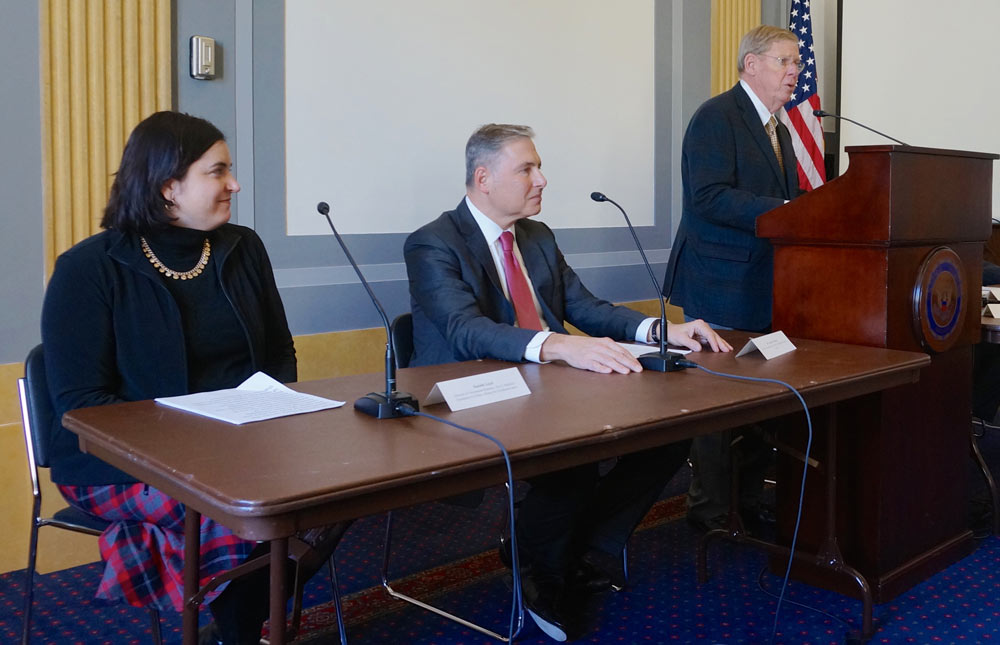
Danielle sits with Dr. Louis Weiner, Director of the Georgetown Lombardi Comprehensive Cancer Center, as Senator Johnny Isakson (R-GA), co-chair of the Senate Cancer Caucus, speaks.
Most survivors will have a chronic health problem or severe life-threatening conditions. I know a child wheelchair-bound for life after a radiation-induced stroke, and another who has the heart of a 50-year-old in his 8-year-old body. For our children, survival comes at a price that is too high to pay. We can and have the capacity to do better by making cancer research a priority.
Learn more facts about childhood cancer survivors >
Here lies our challenge. We have come far — but not far enough. Clearly, there is a great deal that needs to be done better for our pediatric cancer patients. So I am so very happy to be here today to thank you and to commend Dr. Varmus for his forward-looking budget. It highlights so many of the areas that are critical to childhood cancer.
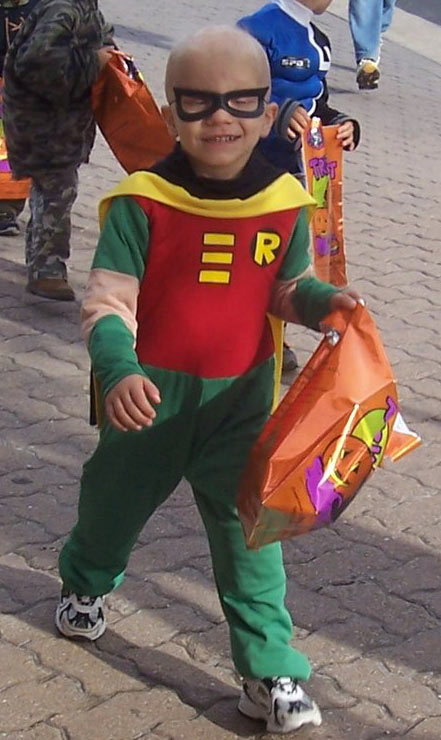
Mason dressed as Robin from Batman for Halloween.
Speaking as a mother, and as an advocate representing tens of millions of other parents and citizens, we stand ready to work with Congress and the NIH to make childhood cancer a top priority so we can give hope to all children and families.
I would ask that you address this problem much like Mason approached life.
Be creative. Mason loved to make a mess and then create something beautiful. We need to find ways we can support cancer research and childhood cancer in particular. It may be a messy process, but we need to be creative in our thinking to save our nation’s children.
Mason was persistent. The tenacity of his spirit is something I aspire to every day as I fight for children with cancer and their families. We need to be persistent in this difficult political environment and fund research to save children’s lives with less toxic treatments.
Lastly, Mason was a superhero. He loved to dress as Batman and other superheroes. He fought the bad guys and saved the world. We need more superheroes for research and the funding needed that will change these kids’ lives.
In honor, in memory, and in defense of all children with cancer, I ask you to support Dr. Varmus and his efforts to be a superhero for kids with cancer. Our nation’s children deserve nothing less.
You can be a voice for kids with cancer — kids who deserve the best childhood cancer treatments. Join our advocacy network, Speak Up.
Read more on the St. Baldrick’s blog:


 SBF
Tweets »
SBF
Tweets »